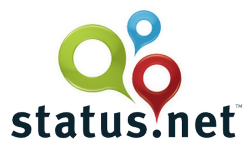Early this morning, famous podcasting personality Leo Laporte, Head TWIT over at the TWIT Network, posted on his Leoville blog a post titled Buzz Kill. Laporte had switched his microblogging over to the underappreciated Google Buzz, which he used to update Twitter. However, he discovered today, August 22nd, that none of his Buzz posts had been public since August 8th. As he puts it,
“Maybe I did something wrong to my Google settings. Maybe I flipped some obscure switch. I am completely willing to take the blame here. But I am also taking away a hugely important lesson. No one noticed. Not even me. …But I feel like I’ve woken up to a bad social media dream in terms of the content I’ve put in others’ hands. It’s been lost, and apparently no one was even paying attention to it in the first place. I should have been posting it here all along. Had I been doing so I’d have something to show for it. A record of my life for the last few years at the very least. But I ignored my blog and ran off with the sexy, shiny microblogs.”
You can read the full text at his blog here, but it does emphasize the thought processes we’ve been exploring as we learn about the federated social web. We have had some conversations with Evan Prodromou of Statusnet, among other people, as we try to understand this, and he was kind enough to send along some recommended reading since the last time we blogged about this.
We should own our own brand, and build its value at a site controlled by us. If you have an email address at a domain you control, you may have someone hosting it, but you can move it whenever you like. You have control. If you have your identity, and our email addresses and social media are part of the identity we build online, then the content is in your hands. Social media becomes a means of distribution, rather than a destination.
That is where the federated social web concept comes in. In a federated system, there are distinct entities that control parts of the system, but those parts are connected with agreed-upon rules to make a pleasing and usable whole. The World Wide Web is such a system. Email is such a system.
Statusnet instances aren’t for everyone, admittedly. Ours hasn’t attracted as many connections as Twitter, but gives us access to a different crowd. But what about blogging? Let’s take Gadget Wisdom.
- We write a blog entry.
- Our RSS feed updates. We use Feedburner to assist with that, but that isn’t required.
- We tweet the post to our Twitter account and dent it to our statusnet instance, so people know what we’re talking about. We still own the conversation.
- Our site draws in anyone talking about our tweet as comments on the post, thus bringing the discussion back to the blog.
Everything comes back to us. We are integrating social media into our site, not going out and relying on it exclusively. It is part of the reason that we don’t participate in Facebook but we do in Twitter. Twitter and similar microblogging paradigms works as a news delivery system, and can even be an alternative for RSS. Facebook has its status updates as well, but it is part of a bigger system that sees to tie everything together. We prefer to do that ourselves.
In case you didn’t get what we are saying…microblogging, social media, and sites such as Twitter, Jaiku, Friendfeed, Plurk, Pownce, Google Buzz, etc should be a content delivery and enrichment system, not a content creation system. Now, we disagree with Leo that they are “an immense waste of time.” We just believe that he should change his approach to social media. Let’s all bring our identities under our control.
Related articles by Zemanta
- So You Want to Only Use One Microblogging Service (lifestyle.gadgetwisdom.com)
- So You Want to Take Control of Your MicroBlogging (lifestyle.gadgetwisdom.com)
- TWiT’s Leo Laporte loses faith in social media (thenextweb.com)
- Buzz Kill (leoville.com)




